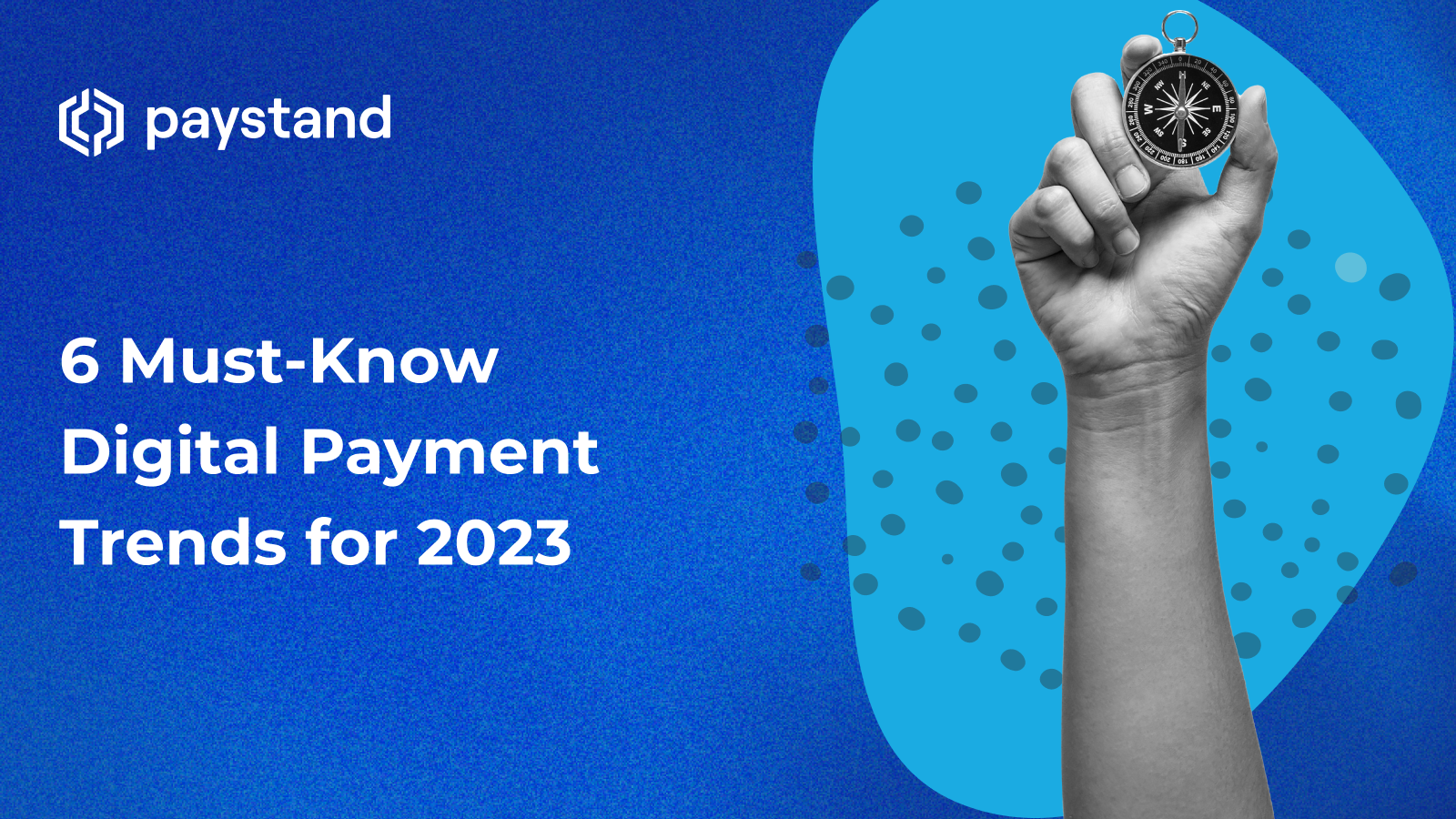6 Must-Know Digital Payment Trends for 2023

Digital payment trends are continually shifting and growing to meet market needs and demands. What we predicted for the pre-pandemic market now differs from the needs of a world handling an uncertain economy, geopolitical upheaval, and continuing supply chain disruptions.
Staying on top of whatever is in demand in a constantly changing market is crucial. You must watch the horizon and prepare for what is coming next.
Unfortunately, uncertainty permeates every industry. And this also makes it impossible to know what will happen over the coming year. But, it is possible to look back over the past year and see some of the growing trends and habits that are on track to making big waves in 2023.
1. The Digital Payments Revolution
Digital payments, such as P2P and mobile payments, streamline the accounts receivable process in the B2B space. These electronic payments carry essential information along with them. The transparency encoded in digital payments helps the accounting team easily track where the money is coming from and which invoice it is going to.
Digital payment is a growing trend taking over the B2B space—to the point where it is a standard payment in industries like eCommerce, retail, healthcare, transportation, and many others. It is gaining popularity because it makes the entire payment process faster, more efficient, accurate, and significantly less labor-intensive.
One reason digital payments are increasing in popularity for B2B transactions is with online payment portals. These portals allow businesses to identify which account and invoice they are paying with a few simple clicks.
A digital payment system often integrates with an organization's ERP. Even with this additional information being processed digitally, digital payments have more security protocols to ensure that no data is at risk—making innovative payments safer than other digital options.
2. Decentralization
There is a growing movement to transition digital payment solutions away from the current banks, financial institutions, and payment processors that have monopolized the industry.
In the past, the only alternatives to paper checks were an automated clearing house (ACH) transfer or a bank wire. ACH controlled digital payments because they were the only affordable option. Bank wires are not only time-consuming but also prone to fraud attacks. In 2020, one-third of fraud attempts included bank wire instructions. And once that one is gone, it's gone. Businesses recovered their money in less than 25% of wire fraud cases.
The good news is that there is a growing market of new competition with real-time payments (RTP). These alternatives address some of the core issues of digital payments that most companies and consumers just assumed were standard, like transaction fees and security.
3. Direct Digital Transfer with Real-Time Payment Options
P2P payment options, like Venmo, Google Pay, Apple Pay, and Paypal, are popular with consumers. These digital payment methods make it easy to quickly transfer funds from one account to the next with minimal or no fees. That same technology is gaining ground in the B2B space, too. This makes it so customers and businesses can automatically transfer money to pay for products or invoices.
Instant payment changes processing times from weeks to hours. It improves businesses' cash flow by virtually removing any severe delays in payment processing.
At the same time, digital payment methods also verify sensitive customer data, such as their name, bank or credit card number, and other critical information. Transactions become more secure for both the buyer and seller.
4. More Flexible Payment Options
While many companies have a preferred manual payment method that involves a credit or debit card, flexible payment options are starting to enter the market again. Flexible payment methods help increase your customer base because it helps them reduce the risk of bad debt. It also attracts customers that use alternative payment methods.
With additional payment options like autopay, buy now pay later (BNPL), payment plans, embedded payments, and recurring payments, customers and clients gain more control over their finances while still making necessary purchases.
5. Increased Regulatory Pressures
The rapid change in the payments industry has prompted updated regulations. For example, the Consumer Financial Protection Bureau (CFPB) amended Regulation E to protect international remittances of U.S. citizens in 2020. And in 2022, they also released clarifying FAQs for the Electronic Fund Transfer Act (EFTA) and Regulation E to improve transparency around P2P payments.
In other words, compliance with contactless payment is changing fast. It can take much work for most financial institutions to keep up. However, fintech companies often need to be more knowledgeable to adjust quickly.
6. Easier Accounting for Early-Payment Discounts
Offering discounts on payments is becoming more popular because suppliers want to be paid faster to improve their cash flow. For example, if a company makes a payment in 10 days instead of 30 or 60 days, they receive a 5% discount. This benefits both the supplier and the client because it enables the supplier to improve their cash flow, and the client can make big purchases at a consistent discount.
But accounting for this process can be complex and time-consuming, especially if an AR team enters remittance data manually.
Digital payment solutions make it possible to track every transaction. With blockchain technology, these receipts can be rapidly notarized and unchangeable, making it harder to commit fraud internally.





